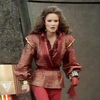
( Read more... )


Originally reblogged by me on Tumblr but worth reposting here because YES, PREACH!, and WTF.
[image: RR.jpg]
I don't love Robert Reich but I sure like him A LOT 1) because abso-fucking-lutely to the above, and B. many other concise brilliant analyses he's posted.
These fuckers are 100% hypocrites. It's all bullshit to push through an authoritarian system designed to promote and enhance kleptocracy. That is the ultimate goal: kleptocracy. Look it up. You will see that I am right.
Also I am increasingly disheartened that, yet again, William Gibson's scifi
and speculative fiction has predicted the course of Western society.
Goddamnit. I appreciate his intelligence and creativity but. Why does he
have to be right so often. Dogdamnit.
| a work from a Big Bang | a work from a science fiction/fantasy canon | a work posted in 2015 | a work inspired by art | a fic between 1-5k |
| a fanvid | a work posted in 2016 | meta | a work by your favorite creator | a canon compliant work |
| a work you've already commented on | a work from a fandom you don't normally seek out | FREE SPACE | line art | a fic that's over 5k |
| a work posted in 2012 | a work from a comedic canon | a work that wasn't created for any challenge | a canon divergent work | a work from a movie canon |
| a work from a tv show canon | a work from a fandom with a closed canon | a work that has two of your favorite tags | a work from a horror canon | black and white art |





Sure, why not, let's bookpost.
Feb 27
A friend we know from Ruth's shapenote singing community wrote a zine about going on long bike tours. It's good! Wren generally puts a lot of energy into thinking about things like the practical exercise of freedom and the purpose of risking yourself on an adventure, and I always value the sense of being gently shaken out of autopilot that I get from talking to (or reading) them.
I don't know of anywhere a random person could obtain this from, but it's worth picking up if you happen to see it around.
Mar. 30
(For now I’m putting Liu as the author here rather than Laozi, but I might reconsider at some point. He has a lot of commentary in his own voice interspersed throughout the book (on the Dao, on other Daoist writers, on the theory and practice of translation), so it’s not attempting to be an invisible translation.)
I picked this up because the ebook was on steep sale. My only real prior familiarity with this text was indirect, through the prints it leaves on the surrounding world, and those prints are ambiguous and elusive. Well... the text is also ambiguous and elusive. Even more so than I was expecting, and that’s saying something! Having carefully read it, I do not feel equipped to tell you what I think Daoism is about. Ask me in some later year, maybe.
I’m glad I read this and I expect to return to it. It’s deliberately aggravating and provocative, but in a gentle way. I really had no idea what to think of it right after finishing, but there are one or two ideas in there that have yielded a bit more as I mull them over in the background. (In particular, some paradoxes about the entire concept of “leading.”)
Apr. 14
This long-running French sci-fi comic series came up in a conversation about The Fifth Element; I hadn't really heard of it, but it's apparently widely influential. The library had a bunch of it, so I checked out a couple volumes.
The art and the environment design in these is fabulous. But I found the stories a bit tedious and slight, and the cartooning (as distinct from the superb draftsmanship and composition) wasn't to my taste, so I don't expect to read much more of it.
This is that style of comic where the panels are lushly and meticulously detailed, but there aren't enough of them to properly control the narrative flow, and so they compensate by cramming a goddamn paragraph of captions above every other panel. My personal name for this phenomenon is "That Prince Valiant Thing," in honor of a baffling Sunday newspaper strip from my childhood that always seemed to have like one panel of dudes staring into space and a half-page of turgid narration in which absolutely nothing ever happened. I'm sure there's people who like this (or at least are better able to tolerate it), but I personally feel that it misses the point of the medium.
Apr. 10
I loved this gory inverted fairy tale about a self-made monster.
This novella has an extremely good Shape, and I wish I could define that better for you. I've had an ongoing background ponder running for years about what exactly the novella as a form is good for, and my current (tentative) thinking is that it's either for episodic stories, or for stories where you're trying to draw a very particular geometric structure with the plot (which requires more elbow room than a short, but which will have less success in a longer novel because it's harder for the reader to hold the whole of the shape in their head at once). The failure states for the novella are, of course, "short story that wasn't cut enough" and "novel with insufficient development."
 If you know me, you know one thing I complain about a lot (and probably more than any sane person should) is the use of licensed music in animated movies. I especially hate the use of licensed music in Illumination studio movies. Though, I can recognize that I am biased because I hate Illumination as a whole and dislike 93.3% of their movies (I did the math).
If you know me, you know one thing I complain about a lot (and probably more than any sane person should) is the use of licensed music in animated movies. I especially hate the use of licensed music in Illumination studio movies. Though, I can recognize that I am biased because I hate Illumination as a whole and dislike 93.3% of their movies (I did the math).
There is one movie, though, in which I find the licensed music to not only be tolerable, but enjoyable. Megamind is the only movie where licensed music is absolutely essential throughout the film, and integral to the very character of Megamind himself.
Megamind is a flashy, theatrical villain who is in it for the love of the game. He lives for the showmanship and flamboyant performances that are the fights between him and Metro Man. As he says in the final fight of the movie, the difference between a villain and a supervillain is presentation. And you can see this ideal of his throughout the film.
In the first interaction with Roxanne Ritchi, where she has been kidnapped and is in Megamind’s evil lair, he unveils all these supervillain-esque devices to her in hopes to come across as a threatening villain. There’s alligators, spikes, a disc blade sort of thing, a mini gun, even a flamethrower. She is impressed by none of it, of course, and his confidence deflates as she mocks him. She also asks where they get all their blinky dials and Tesla coils, to which Minion responds that they come from an outlet store in Romania.
As we can see from this exchange, Megamind goes out of his way to aesthetically meet the requirements of being a villain. So much so that he even buys fake equipment from overseas to look professional. Essentially, he has props. Because he’s a theater kid!
Megamind is obsessed with the pageantry of heroes and villains. We can see this in the exchanges he has with Metro Man and their “witty” banter about microwave warranties. He loves it so much that when he is training Hal to be a superhero, he specifically tries to teach him how to have that same back-and-forth like Metro Man did with him. Even during their first fight, Megamind says “Now it’s time for some witty back-and-forth banter!”
Right before this fight, Megamind accuses Hal of being “unprofessional” and that Metro Man would’ve never kept him waiting, because he was a pro. Hal isn’t “professional” enough for Megamind, and when Hal catches him after their fight and says he’s going to kill him, Megamind says “that isn’t how you play the game.” Proof that Megamind sees this all as a big stage play. It’s a game to him, and one he loves and takes great care in making sure all of the details and specifics are just right and fit his ideal narrative perfectly.
In this same vein, Megamind is obsessed with perfecting his outfit, the Black Mamba, for his first fight with Hal. He wants his costume to look good for his big battle. For what is a good show without the costuming department? In the beginning of the movie, he intentionally points out that he’s wearing custom baby seal leather boots just to prove to everyone he is the bad guy. Look how evil he is, see how dastardly Megamind is. He’s obsessed with painting this picture of himself that presents himself as heinous and diabolical.
Which is exactly why all of the licensed music in this movie fits Megamind perfectly. More often than not, he is the one actually playing the music out loud. When he takes over Metro City, he tells Minion to “hit it” and plays “Highway to Hell” on a big boom box that Minion carries around. He proceeds to dance to it, and makes his smoke show entrance to city hall while it plays. For his final fight with Hal, he plays “Welcome to the Jungle” out loud and creates a huge smoke and light show with his Brain Bots. This is the part where he proclaims “presentation!” is the key to super villain. At the end of the movie, he plays “Bad” on an even bigger boom box and him and Roxanne dance to it.
The point here is that his music choices are intentional. The songs are tools that serve his purpose of painting himself as an iconic, nefarious villain. The licensed music isn’t just thrown in, it’s part of the world and a part of Megamind himself. It is intentional. And it works.
God, I love Megamind.
Do you like Megamind? Do you hate licensed music as much as I do, or am I just obsessed with something niche? Should I talk about why Despicable Me is the only good Illumination movie? Let me know in the comments, and have a great day!
-AMS